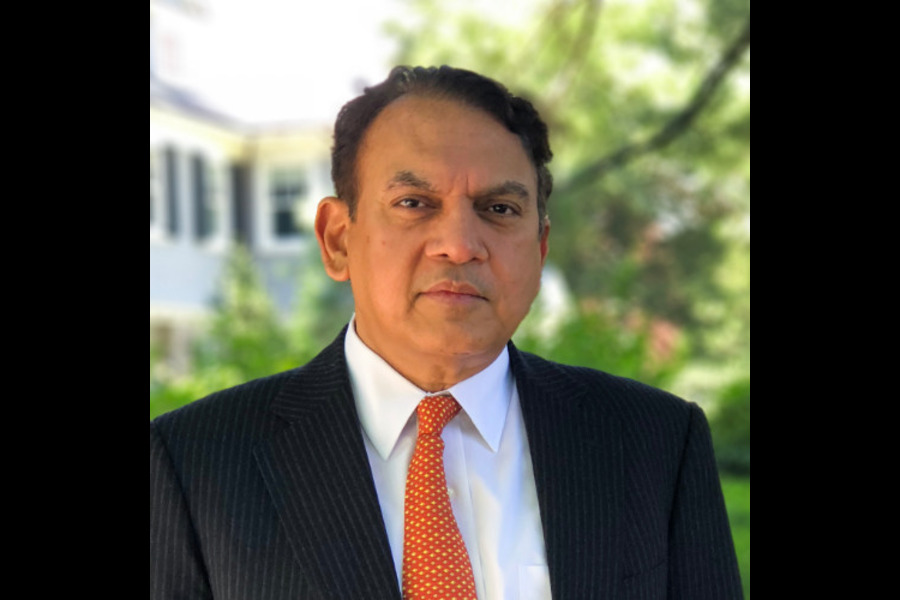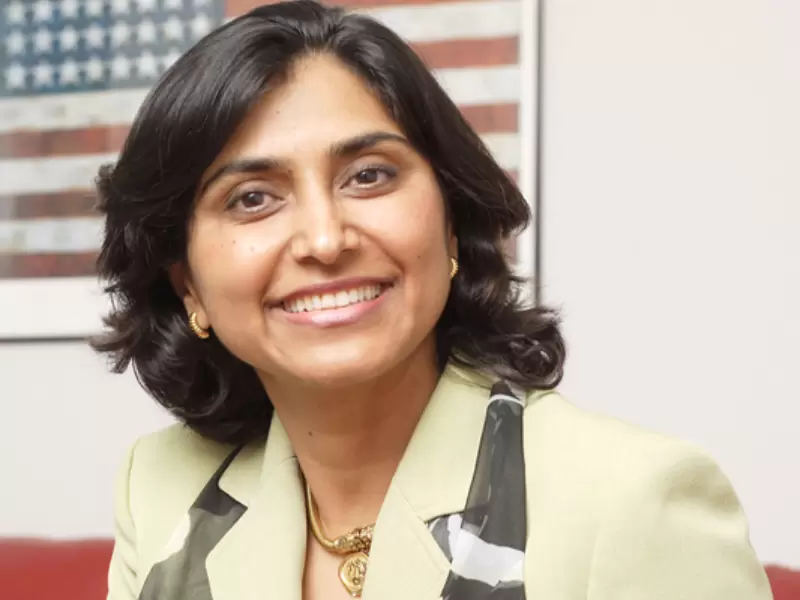India’s Missed Opportunity: A Call to Wake up to the Future
Seventy-seven years after independence, India’s per capita GDP languishes at $2,700, compared to China’s $13,160 and South Korea’s $36,900.
 Representative Image. / Pexels
Representative Image. / Pexels
In 1984, as a young Indian student at Harvard, I sat in a post graduate classroom with five Chinese peers, one Korean, and no Americans. The absence of Indian classmates in such elite global settings was striking then, and little has changed in the decades since.
India, a nation brimming with talent, continues to squander its potential, trapped by an obsession with its storied past and a failure to embrace the future. As someone who spearheaded the One Laptop per Child (OLPC) initiative in India with the support of Nicholas Negroponte of MIT, I have witnessed firsthand the transformative power of education and technology—and India’s persistent inability to harness it.
Seventy-seven years after independence, India’s per capita GDP languishes at $2,700, compared to China’s $13,160 and South Korea’s $36,900, though all three nations started at roughly $50 in 1947. This stark disparity is not an accident but a consequence of India’s failure to prioritize quality education, visionary leadership, and forward-looking innovation, particularly in artificial intelligence (AI).
Instead of building a future, India thumps its chest about its glorious past, leaving its immense talent—evident in global leaders like Vinod Khosla, Desh Deshpande, Sundar Pichai, and Satya Nadella—to flourish abroad while the nation stagnates.
The Education Crisis: A Foundation in Ruins
India’s education system is a tragedy of unrealized potential. In government schools, which serve the majority of our 250 million school-age children, the government spends a paltry $80–$120 per student annually—excluding elite Kendriya Vidyalayas and Navodaya Vidyalayas. This is a fraction of the $500–$600 spent per student in China’s urban schools or the $1,000–$2,000 in developed nations.
The result is dire: the 2023 Annual Status of Education Report (ASER) reveals that only 20.5 percent of Class 8 students in rural India can read at a Class 2 level, and just 43.5 percent can perform basic division. Twenty percent of rural schools lack electricity, and 15 percent have no functional toilets, disproportionately affecting girls (UDISE 2022). Teacher absenteeism and outdated curricula further cripple the system, leaving millions unprepared for a modern economy.
My experience with OLPC underscored the transformative potential of technology in education. We aimed to equip every child with a laptop to bridge the digital divide, fostering creativity and critical thinking. Yet, bureaucratic resistance and lack of vision stymied the project’s scale in India.
While countries like Uruguay embraced OLPC, distributing 500,000 laptops by 2010, India’s pilot programs languished. The National Education Policy (NEP) 2020 promises 6 percent of GDP for education and emphasizes skill-based learning, but implementation is woefully slow—only 15 percent of targets have been met by 2024.
Without a coherent strategy, India’s education system remains a patchwork, failing to nurture the next generation of innovators.
The Absence of Visionary Leadership
India once had leaders like Jawaharlal Nehru, whose vision gave us the IITs and IIMs—institutions that produced global titans like Sundar Pichai (IIT Kharagpur) and Satya Nadella (Manipal Institute of Technology). These institutions were bold bets on India’s intellectual capital, but no comparable initiatives have emerged in recent decades.
The expansion of IITs (from 5 in 1960 to 23 in 2025) and IIMs (from 2 to 21) has stretched resources thin, with 30–40 percent faculty vacancies in older IITs (2023 data). Newer institutions like IISERs and AIIMS struggle to gain global prestige, ranking below 200 in QS World University Rankings 2025.
Today’s leadership lacks the audacity to invest in transformative fields like AI or quantum computing. India’s National Quantum Mission, launched in 2023 with a $1 billion budget over eight years, pales against China’s $15 billion quantum investment. Political discourse prioritizes populist measures—free education schemes, reservations—over long-term innovation. This contrasts sharply with South Korea’s Park Chung-hee, who in the 1960s drove industrialization through education and R&D, or China’s Deng Xiaoping, whose reforms unleashed economic growth. Without a modern Nehru, India risks falling further behind.
Economic and Demographic Stagnation
India’s economic lag is inseparable from its educational failures. From a population of 340 million in 1947, India has ballooned to 1.45 billion by 2025—a 4.3-fold increase—compared to China’s 1.4x and South Korea’s 2x growth. This unchecked population growth strains resources, turning a potential demographic dividend into a liability, with 30 percent youth unemployment in urban areas (CMIE 2024).
India’s per capita GDP of $2,700 reflects this strain, dwarfed by China’s $13,160 and South Korea’s $36,900 (IMF 2024). All three nations began at similar levels in 1947, but South Korea’s 10% GDP investment in education and R&D by the 1980s built giants like Samsung, while China’s post-1978 reforms produced 8 million STEM graduates annually by 2020. India, with 2.5 million STEM graduates, lags far behind.
The narrative of India’s “breeding” problem is harsh but grounded in reality. Population growth has outpaced infrastructure, with 50 percent of rural schools overcrowded (UDISE 2022). Meanwhile, cultural debates over historical glory—Vedic mathematics, temple-mosque disputes—divert attention from urgent needs. India’s digital strides (e.g., UPI) and space achievements (ISRO’s Chandrayaan) show potential, but they are exceptions in a landscape dominated by short-term thinking.
The AI and Innovation Deficit
India’s failure to embrace AI is a glaring missed opportunity. With $1.5 billion in AI investments in 2024 (NASSCOM), India trails China ($20 billion) and the U.S. ($60 billion). Our 1.5 million annual engineering graduates are a strength, but only 10 percent are AI-proficient due to outdated curricula. The National AI Strategy (2018), with $1 billion over five years, is underfunded compared to China’s 80,000 AI patents in 2023 (India: 4,000). South Korea’s AI-driven 5G infrastructure further highlights India’s lag, as our 4G-heavy network struggles to support advanced technologies.
India’s higher education system, particularly its Ph.D. programs, lacks global respect. Only 0.5 percent of our 27 million higher education students pursue Ph.D.s, and institutions like IISc rank below 200 globally. Brain drain compounds this: 60 percent of IIT graduates work abroad, and talents like Vinod Khosla (Carnegie Mellon Ph.D.) thrive in ecosystems that India fails to replicate.
My 1984 Harvard experience—where Chinese and Korean students outnumbered Indians—remains relevant, with 150,000 Chinese students in U.S. universities in 2023 compared to India’s 50,000.
Cultural and Structural Barriers
India’s obsession with religion and history, while culturally rich, often overshadows innovation. Political campaigns glorify the past, while rote learning and coaching centers (serving 80 percent of JEE aspirants) stifle creativity. Reservation policies, though necessary for equity, have led to perceptions of compromised merit, with 50 percent of IIT seats reserved (2024).
In contrast, South Korea’s meritocratic education system and China’s STEM focus have driven their success. India’s IT sector ($200 billion, 7.5 percent of GDP) and 100,000 startups show resilience, but without systemic reform, they cannot close the gap with global leaders.
A Path Forward
India must awaken to its possibilities. First, we must increase education spending to 6 percent of GDP, as NEP 2020 promises, prioritizing teacher training, digital classrooms, and STEM curricula. South Korea’s education parks could inspire innovation hubs. Second, AI investment must rise to $10 billion by 2030, with private-sector partnerships (e.g., Infosys, TCS) to build AI labs. Third, Ph.D. programs need global partnerships and stipends to retain talent. Fourth, cultural narratives must shift to celebrate STEM role models like ISRO’s K. Sivan over historical nostalgia. Finally, policies to attract diaspora talent through tax incentives could spark a reverse brain drain.
Conclusion
India’s talent is undeniable, as evidenced by global leaders like Pichai and Nadella. Yet, our failure to invest in education, embrace AI, and foster visionary leadership has left us stuck at $2,700 per capita, while China and South Korea soar. My work with OLPC showed what’s possible when technology meets education, but India’s inertia stifled that vision. We cannot rely on individual brilliance to compensate for systemic failures. By prioritizing education, innovation, and meritocracy, India can transform its demographic dividend into a global force, ensuring talents like Pichai thrive at home, not just abroad. The future awaits—if only we dare to seize it.
(The views and opinions expressed in this article are those of the author and do not necessarily reflect the official policy or position of New India Abroad)
ADVERTISEMENT
ADVERTISEMENT
E Paper
Video



 Satish Jha
Satish Jha












Comments
Start the conversation
Become a member of New India Abroad to start commenting.
Sign Up Now
Already have an account? Login